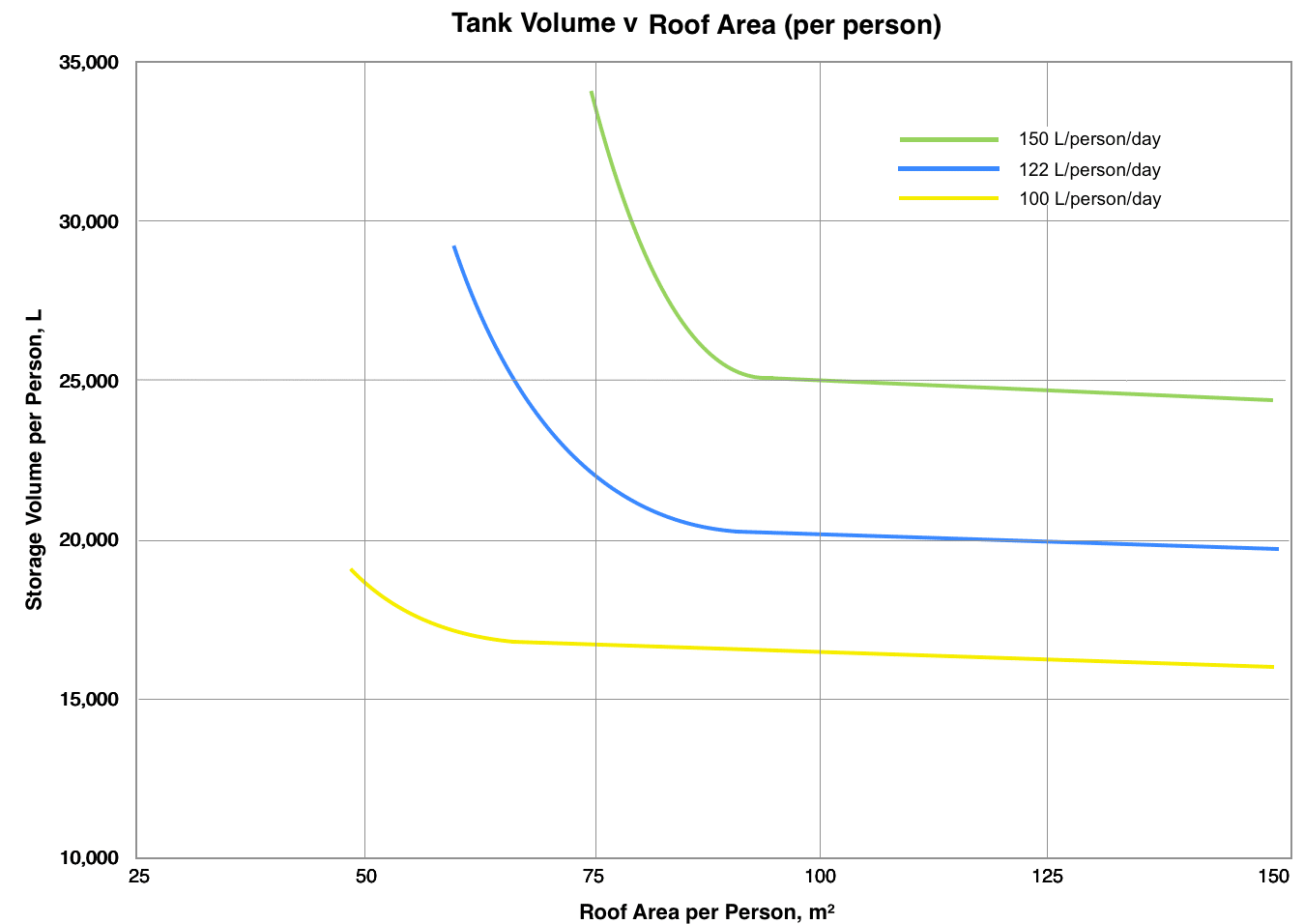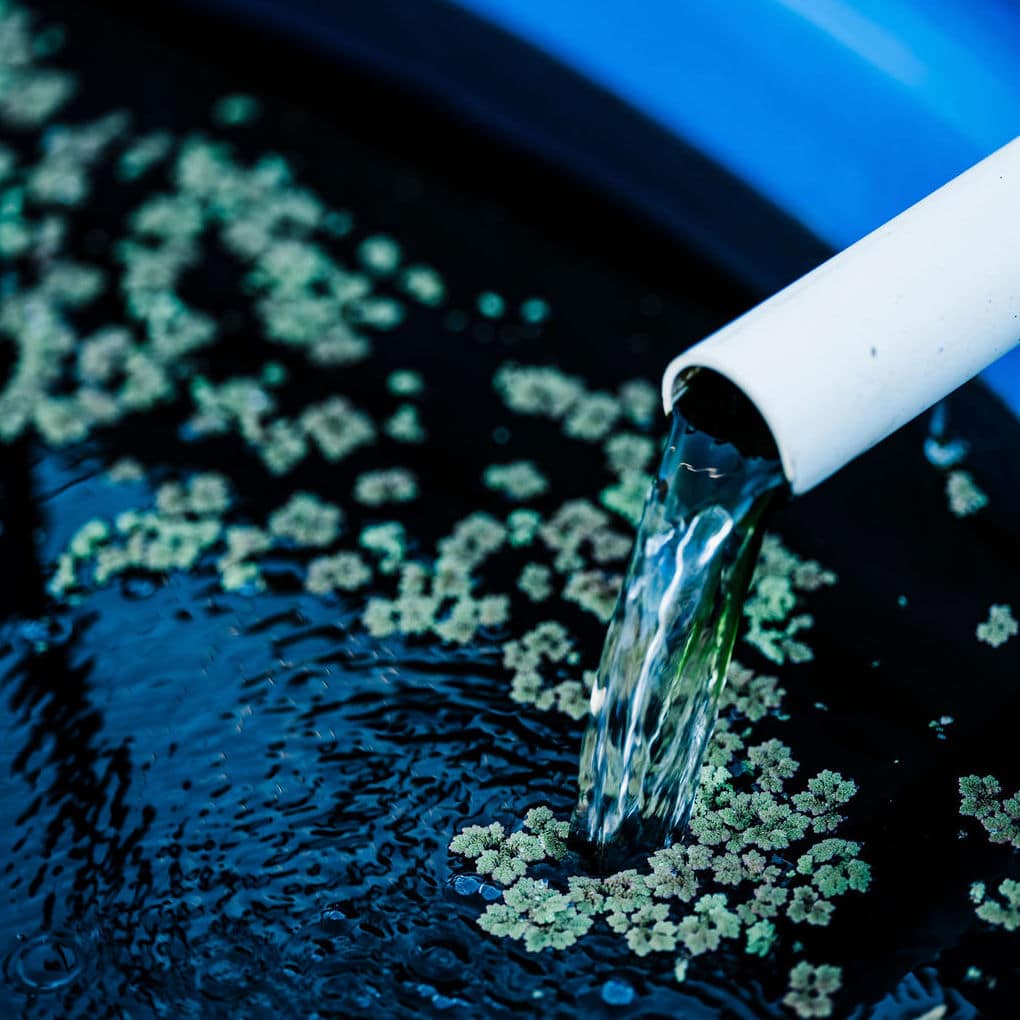At the Witchcliffe Ecovillage, we have modelled our management of the water cycle on natural ecosystems, where water is collected, used and cleansed using natural biological systems, and then reused on site.
The natural rainfall on our site will be used to sustain the healthy lifestyle of our community, grow our gardens, produce our food, grow timber, sustain our riparian habitats, and maintain the natural pattern of the stream flows that leave our site.
Our integrated approach to rainwater collection, stormwater treatment, wastewater treatment, water storage, landscape and agricultural irrigation, maintenance of natural stream flows and rehabilitation of natural habitat for aquatic life ensures the complete water cycle is managed on site by the community.
Household Rainwater Tanks
Rainwater tanks are mandatory for every house in the Ecovillage and are required to supply all household needs. The size of the rainwater tank required is dependent on rainfall patterns, roof area and the amount of water used.
We have undertaken extensive modelling using rainfall data from the Bureau of Meteorology, typical residential water consumption rates for Perth and Margaret River, best practice data from a model sustainable household, and factored in future changing rainfall patterns to come up with our recommended tank sizing.

Recommended household rainwater tank sizing
This diagram shows minimum recommended tank sizes for Witchcliffe for storage of all household water needs. The tank sizes are based on water use of between 100 L/person/day (water efficient household) and 150 L/person/day (Perth average household). The recommended tank sizes do not include any allowance for watering gardens and lawns.
Wastewater
Every household in the Ecovillage will connect to our own community-level wastewater treatment plant, which is located in the south west corner of the site on Ecovillage Common land. The wastewater treatment system is designed around a modular bioreactor that expands as the Ecovillage grows. The system comprises screening, treatment in a bioreactor to remove nutrient and organic matter, a lagoon to store water for seasonal use, and re-use of treated water for horticulture and agroforestry areas, which provide a buffer to residential areas.
TMC Witchcliffe, a subsidiary of TMC Australasia, is a private company that has been created specifically for the Witchcliffe Ecovillage project, and is the owner and operator of the Ecovillage sewerage scheme and wastewater treatment plant. Tony Johansen, the owner of TMC, is a chemist with extensive experience in waste water management.
Residents are also encouraged to install domestic grey water recycling systems to enable water from bathrooms and laundry to be reused to water gardens on their own lots.
Stormwater
Stormwater in the Witchcliffe Ecovillage will be collected and conveyed in surface water features that have been created to mimic natural ponds and streams. Run-off from roads will be collected in swales, which provide biofiltration to remove pollutants, and will be directed via reconstructed streamlines through the community gardens where further treatment areas incorporating biofilters, riffle and wetlands will provide additional cleansing. Treated stormwater collected and stored in dams will be used for irrigating community gardens, recreation areas, landscaping and agriculture throughout the Ecovillage. Extensive modelling has been carried out to ensure the Ecovillage has plenty of water, even in low rainfall years, to grow food in our community gardens and agricultural lots.
Landscape and Agriculture
The Ecovillage open spaces will rely largely on their water sensitive landscape design, while the productive landscapes, community gardens and agricultural lots will require irrigation through the summer months. This will be provided by three large, highly sustainable dams. The volume of water stored and used from the dams will be offset by the increased stormwater runoff created by the Ecovillage’s roads, rooftops and footpaths, and low flow bypass pipes have been fitted to ensure minimal impact on natural stream flows downstream.
The dams will supply the community gardens and the 17 agricultural lots around the periphery of the village with ample water for irrigation and other needs.

Streamflow
When land is developed for urban and agricultural use, the volume and peak flows from stormwater runoff increase, which our dams capture. But they are also fitted with bypass pipes, which divert the flow around the dams to minimise the impact of natural stream flows downstream. With heavier rainfall events, when flows exceed the capacity of the bypass pipe, our dams are filled.
